It wouldn’t be wrong to say a significant amount of time in our days is spent in offices. And working in a dull environment is indeed gloomy and stressful.
Therefore, adding a bit of color is essential, and an easy, inexpensive way to do so is by filling the empty spaces in your office with greenery.
Below is a list of the 30 best plants for an office with windows, including those that can even fit your desk, some which will make the atmosphere clean and refreshing, and a few that will impact large spaces.
These plants are remarkably tolerant and can survive even in little sunlight and maintenance.
You don’t have to worry about looking after them during busy days or when you’re on some well-deserved holidays.
30 Best Plants for Office with Windows
- ZZ Plant
- Peace Lilies
- Snake Plants
- Dracaena
- Cast Iron Plant
- Pothos
- Rubber Plant
- Heart-shaped Philodendron
- Chinese Money Plant
- Jade Plants
- Aloe Plants
- Donkey Tails
- Cacti
- English Ivy
- Spider Plants
- Paddle Plant
- Lucky Bamboo
- Philippine evergreen
- King Begonia
- Nerve Plant
- Weeping Fig
- Prayer Plant
- Butterfly Palm
- False Shamrock
- Zebra Cactus
- Ponytail Palm Tree
- Swiss Cheese Plant
- Umbrella Tree
- Lady Palm
- Bromeliads
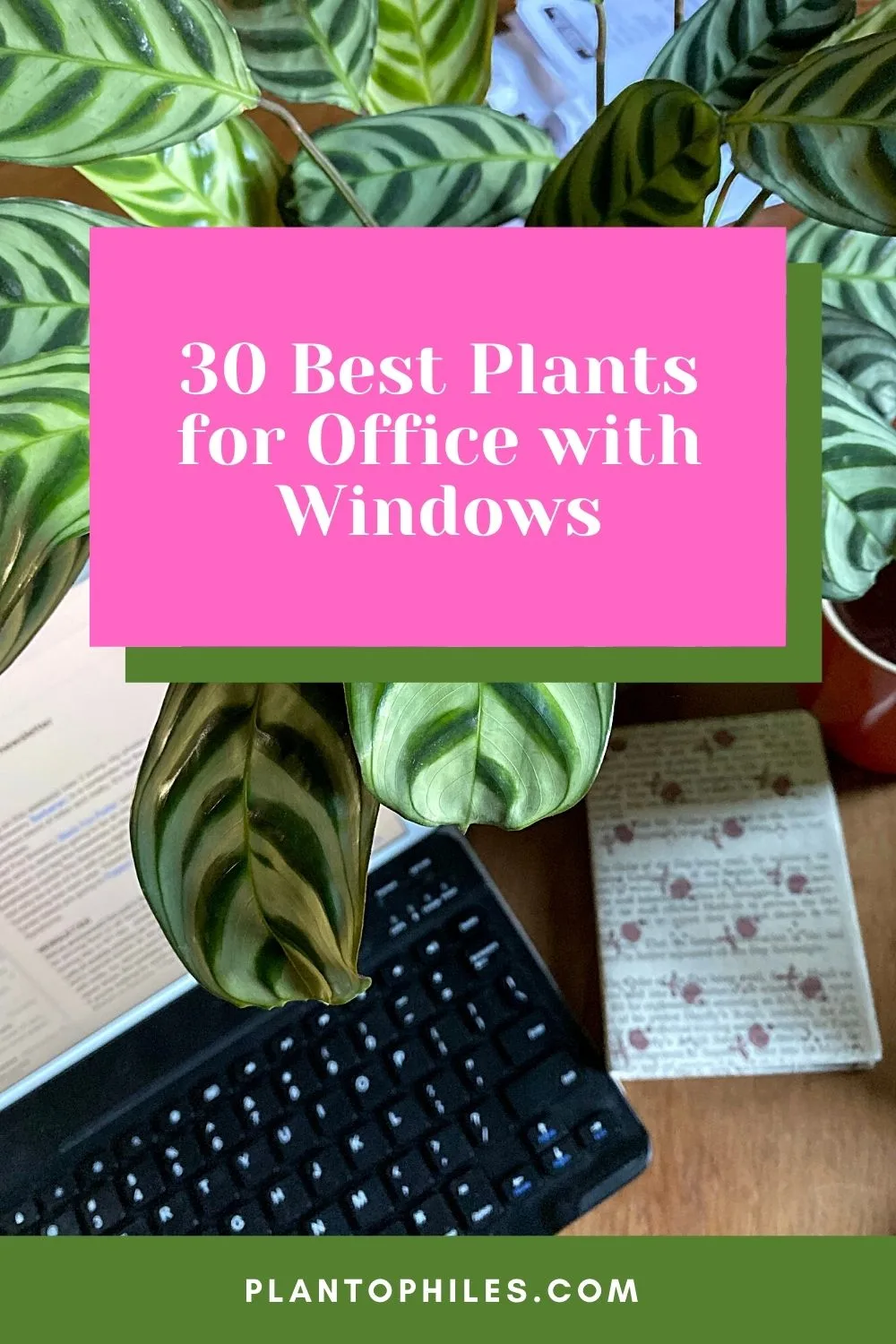
30 Best Plants for Office with Windows
Table of Contents
Plants for Office with Windows – 30 Best Choices
1. ZZ Plant
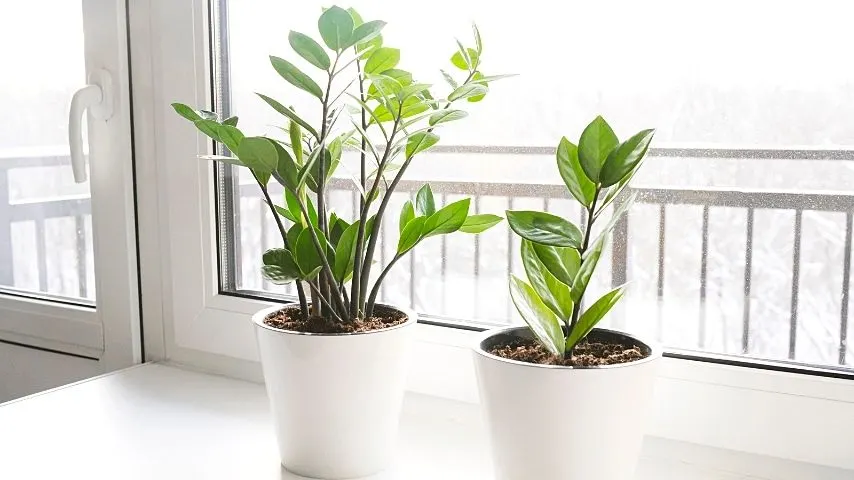
The ZZ Plant is one of the best plants to grow in an office with windows as they’re highly tolerant
We love calling the Zamioculcas zamiifolia the king of indestructible plants because of its highly tolerant properties.
This hardy glossy green plant can thrive even without months of water, do fine in arid situations, and is not influenced by low light.
It has been noticed that the ZZ plant can live for four months without water since they have large succulent rhizomes under the soil that stores water and can be used during times of massive drought.
Additionally, it will look glossy and pretty even after extreme neglect. So, in the case of hectic days at work, your ZZ plant wouldn’t add to the stress you feel.
The binomial nomenclature of the ZZ plant includes:
- Scientific Name: Zamioculcas zamiifolia
- Family: Araceae
- Temperature: Best grown in 60° – 70 °F (15.55° – 21.11 °C)
- Fertilizer: A balanced liquid houseplant fertilizer (20-20-20) every month while watering
- pH: 6.0 – 7.0
- Soil: organic soil, perlite, horticultural charcoal, and orchid bark.
- Lighting: indirect, bright sunlight for almost 12 hours.
- Growth rate: Fast
2. Peace Lilies
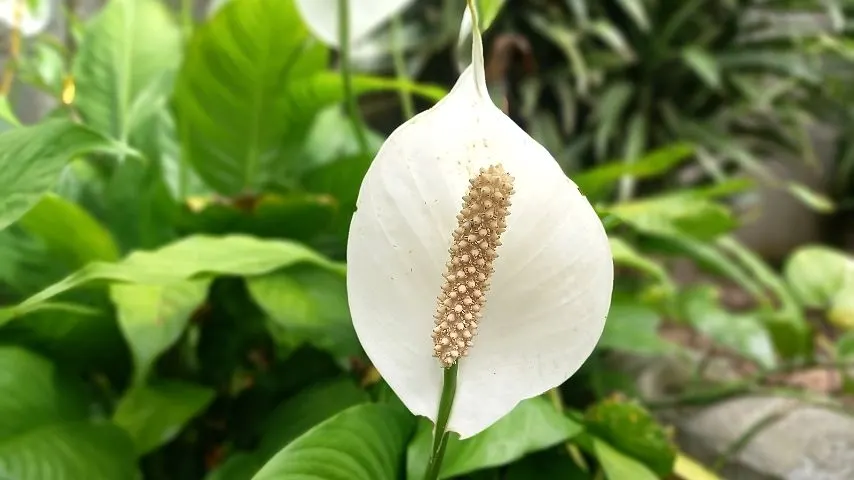
Peace Lilies are some of the most cheery plants you can grow in an office with windows to liven up the space
The Peace Lily is a lively and beautiful plant, having green leaves that can make your office space bright and cheery.
According to Clemson University, Peace Lilies are not real lilies but are part of the Araceae family.
They are perfect for indoor environments as they can tolerate low light and thrive in indirect sunlight. Their attractive white flowers and green foliage can enhance the visual appeal of any workspace.
However, it is advised to use filtered water since peace lilies dislike the chemicals present in tap water.
It is a low-maintenance plant best for dry climates as it purifies and humidifies the air. The binomial nomenclature of Peace Lily includes:
- Scientific Name: Spathiphyllum
- Family: Araceae
- Temperature: Best grown in 68° – 85 °F (20° – 29.44 °C)
- Fertilizer: A balanced liquid houseplant fertilizer (20-20-20). Ensure watering after fertilizing to distribute the water among roots evenly.
- pH: 5.8 – 6.5
- Soil: a usual potting mixture is fine, especially the one that has perlite, coir, loam, or peat moss.
- Lighting: indirect, low to bright sunlight
- Growth rate: Moderate
3. Snake Plants
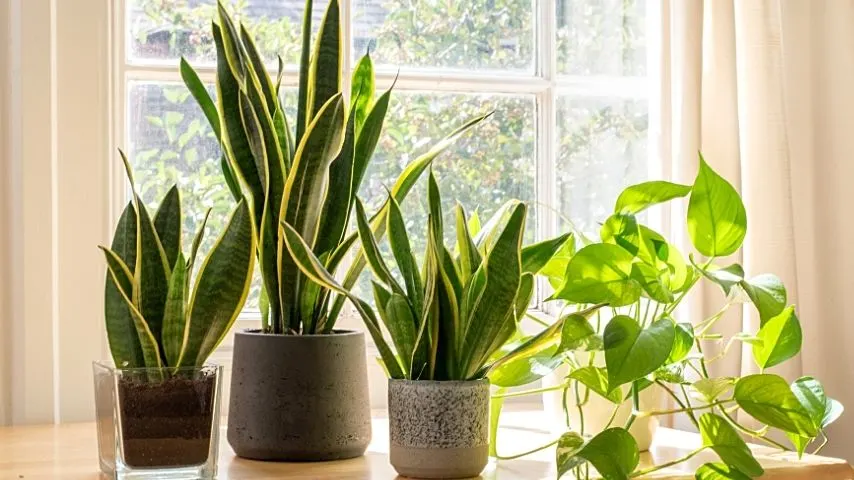
Snake Plants are great plants to grow in an office with windows as they can thrive even without a month of water
The snake plant also called mother-in-law’s tongue, or Sansevieria is becoming immensely popular because it is pretty tough.
They can live up to a month without water and tolerate both direct and indirect sunlight. Another characteristic that makes it super flexible among other office plants is that it will thrive even in dry conditions.
The plant has silvery green leaves with dark green stripes. Additionally, they purify the air and make your workspace refreshing.
The binomial nomenclature of snake plants includes:
- Scientific Name: Dracaena trifasciata
- Family: Asparagaceae
- Temperature: Best grown in 55° – 85 °F (12.77° – 29.44 °C)
- Fertilizer: It doesn’t need fertilizer; however, a houseplant fertilizer is fine once or twice a year.
- pH: 5.5 – 7.5
- Soil: light loamy, well-drained soil
- Lighting: indirect, bright, or direct sunlight
- Growth rate: Slow
4. Dracaena
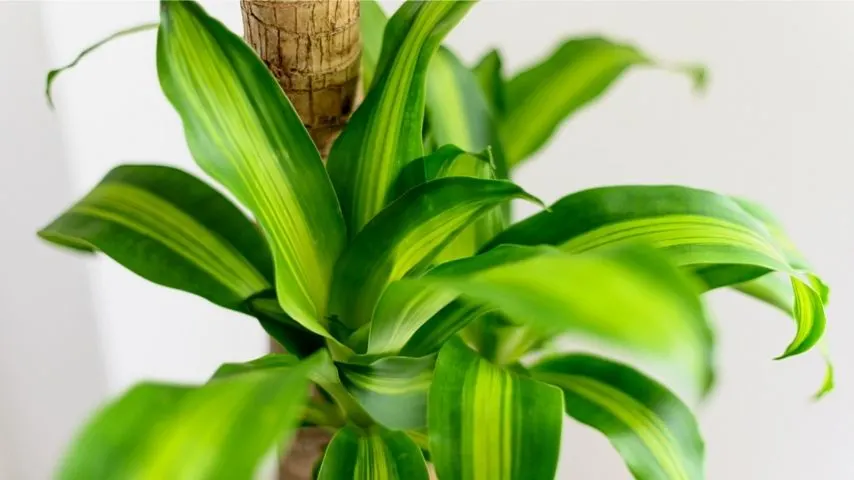
Dracaena have spiky foliage in various shapes, colors, and sizes that spruces up your office with windows
You can not go wrong with Dracaena plants. They have spiky foliage available in several different shapes, colors, and patterns.
Their variegated leaves and splashes of alternative hues make them perfect for making your office look appealing.
The binomial nomenclature of Dracaena includes:
- Scientific Name: Dracaena
- Family: Asparagaceae
- Temperature: Best grown in 65° – 75 °F (18.33° – 23.88 °C)
- Fertilizer: water-soluble houseplant fertilizer with a 3:1:2 ratio of nitrogen-phosphorus-potassium and traces of sodium, copper, zinc, manganese, and iron
- pH: 6.0 – 6.5
- Soil: A usual soil mix that drains well
- Lighting: indirect, low to bright sunlight
- Growth rate: Slow
5. Cast Iron Plant
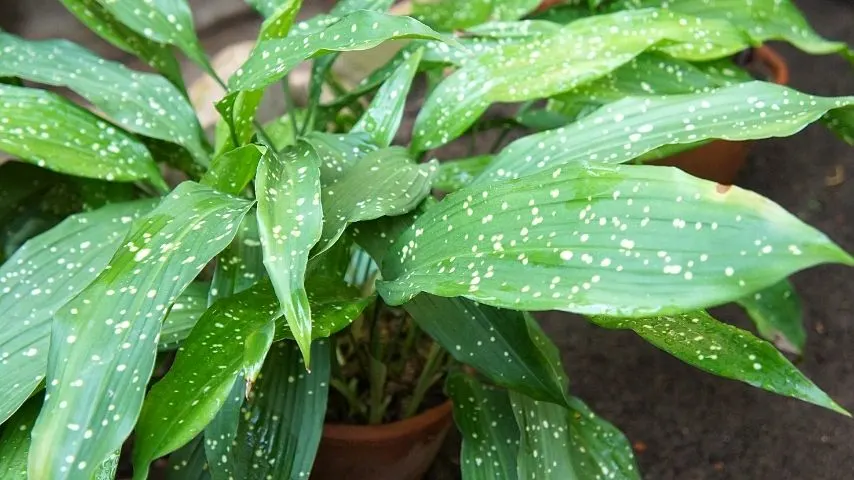
One of the best plants to grow in an office with windows is the Cast Iron Plant
Cast Iron is another best plant for offices with windows. It is named and popular for its capability for surviving in almost any condition – taking abuse and neglect like a hero.
It can survive irregular watering, low light, temperature fluctuation, and low humidity. The Cast Iron Plant typically reaches up to 2 ft in length.
The binomial nomenclature of Cast Iron Plant includes:
- Scientific Name: Aspidistra elatior
- Family: Asparagaceae
- Temperature: Best grown in 60° – 75 °F (15.55° – 23.88 °C)
- Fertilizer: Fertilize once every month during the summer and spring using an all-purpose liquid fertilizer.
- pH: 5.5 – 6.5
- Soil: Any soil such as loamy, sandy, or clay, but make sure it is well-draining and organically rich
- Lighting: medium to low indirect sunlight
- Growth rate: Slow
6. Pothos
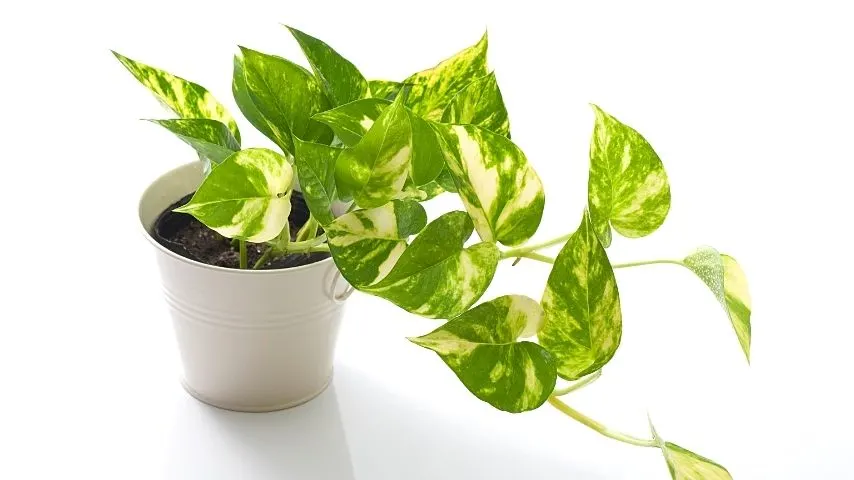
A low-maintenance plant you can grow in an office with windows is the Pothos
Pothos is another extremely low-maintenance plant; however, it is pretty toxic to pets and kids and known as Devil’s Ivy.
Besides being attractive, pothos can survive in indirect sunlight and are a great air purifier – perfect for a workplace setting.
The binomial nomenclature of Pothos includes:
- Scientific Name: Epipremnum aureum
- Family: Araceae
- Temperature: 70° – 90 °F (21.11° – 32.22 °C)
- Fertilizer: A balanced houseplant fertilizer multiple times a year
- pH: 6.1 – 6.5
- Soil: Soil has a mixture of perlite, vermiculite, or peat moss and must be well-draining
- Lighting: does fine in low light, but thrives in indirect, bright light
- Growth rate: Rapid
7. Rubber Plant
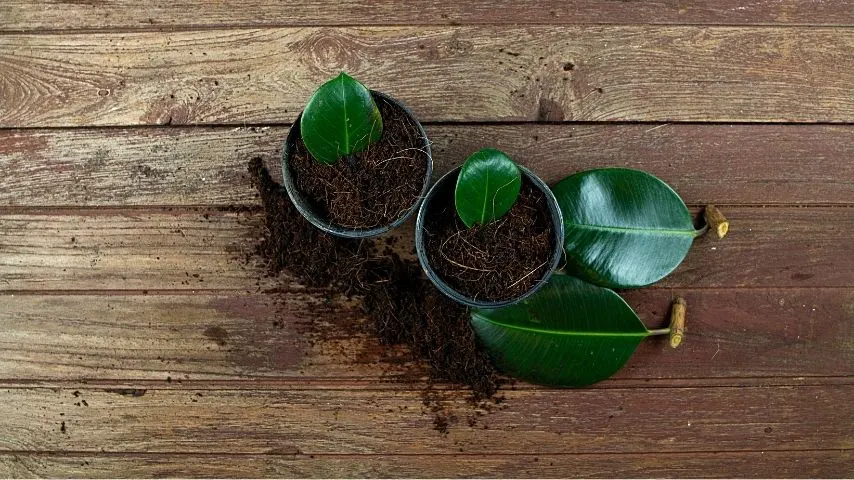
Rubber Plant is another great low-maintenance plant you can grow in your office with windows due to its stunning dark green foliage
Rubber plants are low-maintenance dark green perennials capable of growing quite tall; therefore, make sure you have enough space at your office to let these small trees thrive.
Another benefit of rubber plants is their large leaves that capture harmful airborne particles and purifies the air.
The binomial nomenclature of Rubber Plants includes:
- Scientific Name: Ficus elastica
- Family: Moraceae
- Temperature: 60° – 65 °F (15.55° – 18.33 °C) at night and 75° – 80 °F (23.88° – 32.22 °C)
- Fertilizer: apply a 10-10-10 fertilizer every 3 months
- pH: 6.0
- Soil: Soil has a mixture of perlite, pine bark, or peat moss and must be well-draining
- Lighting: bright, indirect light
- Growth rate: Rapid
8. Heart-Shaped Philodendron
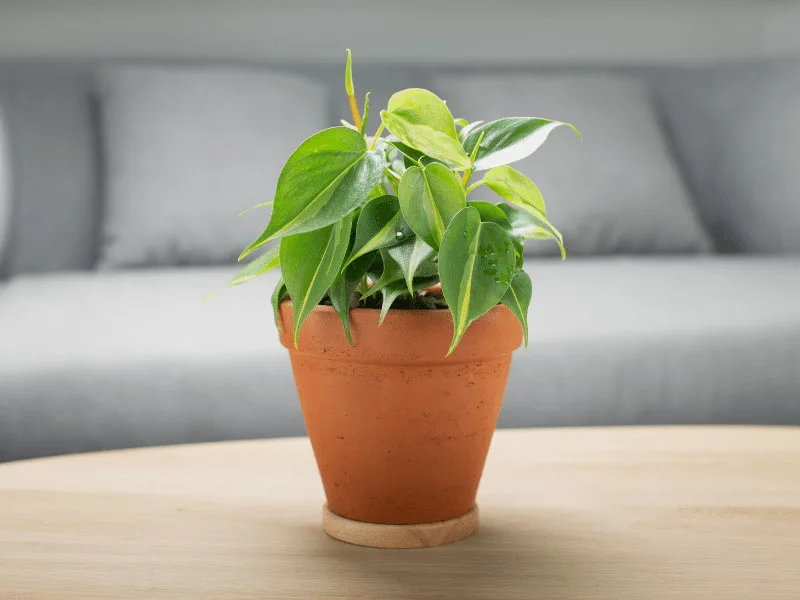
Out of all the Philodendron varieties, the Heart-Shaped Philodendron is the perfect fit for an office with windows
Among the wide range of Philodendrons, the Heart-shaped philodendron is the easiest to maintain since it’s the most famous one.
This Heart-shaped Philodendron can survive in various temperature and lighting conditions. Just make sure the soil’s surface becomes dry between watering.
The binomial nomenclature of Heart-shaped philodendrons includes:
- Scientific Name: Philodendron hederaceum
- Family: Araceae
- Temperature: 70° – 85 °F (21.11° – 29.44 °C)
- Fertilizer: Apply a balanced 20-20-20 fertilizer every 3-4 weeks in the growing season
- pH: 5.5 – 6.0
- Soil: a mixture of perlite, orchid bark, or peat moss and must be well-draining, fertile, and light-weight
- Lighting: Indirect light
- Growth rate: Rapid
9. Chinese Money Plant
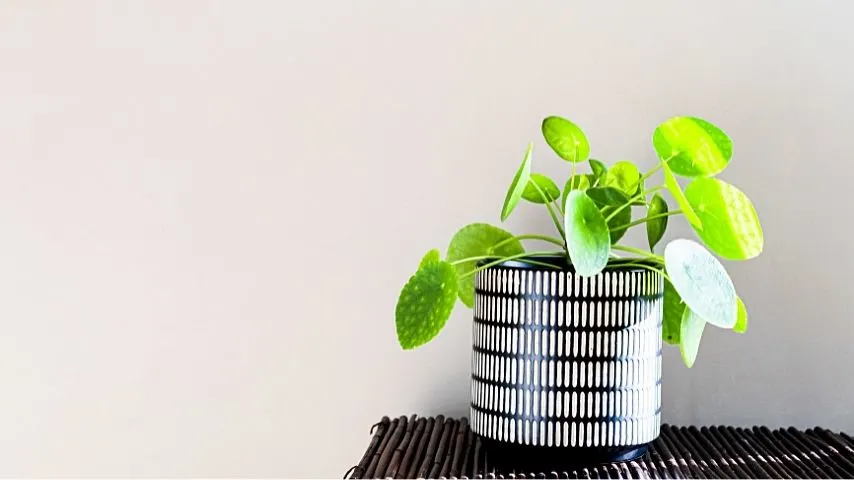
Chinese Money Plants can thrive in an office with windows so long as the sunlight there is bright but indirect
These plants thrive in bright, indirect sunlight and the leaves are prone to scorching in direct sunlight.
They can withstand temperatures as low as the freezing point, and a prolonged period of cold temperature may encourage the growth of beautiful white blooms on their pink stem.
The binomial nomenclature of the Chinese Money Plant includes:
- Scientific Name: Pilea peperomioides
- Family: Urticaceae
- Temperature: 60° – 75 °F (15.55° – 23 °C)
- Fertilizer: diluted common houseplant fertilizer once monthly in the growing season (spring-early fall)
- pH: 6.0 – 7.0
- Soil: well-draining soil having peat moss, perlite, or coir fiber.
- Lighting: bright, indirect light
- Growth rate: Rapid
10. Jade Plant
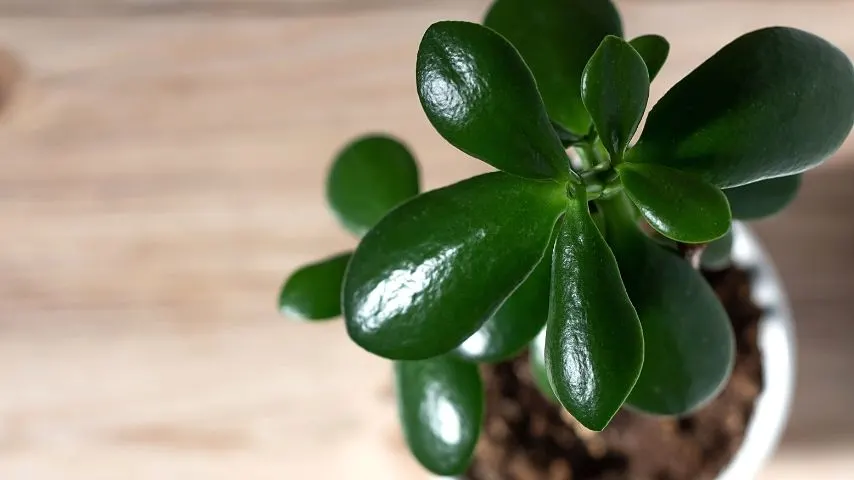
A Jade Plant thrives in an office with windows as they grow best near sunny windowsills
Try these cheery, low-maintenance succulents if you’re a beginner and want to make your office look pretty and refreshing. They grow best on sunny windowsills.
Additionally, they are available in many varieties, so you have a wide range to choose from.
The binomial nomenclature of the Jade Plants includes:
- Scientific Name: Crassula ovata
- Family: Crassulaceae
- Temperature: 50° – 55 °F (10° – 12.77 °C) at night and 67° – 75 °F (18.33° – 23.88 °C) during the day
- Fertilizer: diluted 10-20-10 fertilizer every six months during the growing season
- pH: 6.0
- Soil: rocky and sandy soil with low fertility
- Lighting: bright, indirect light for at least 6 hours
- Growth rate: Slow
11. Aloe Plant
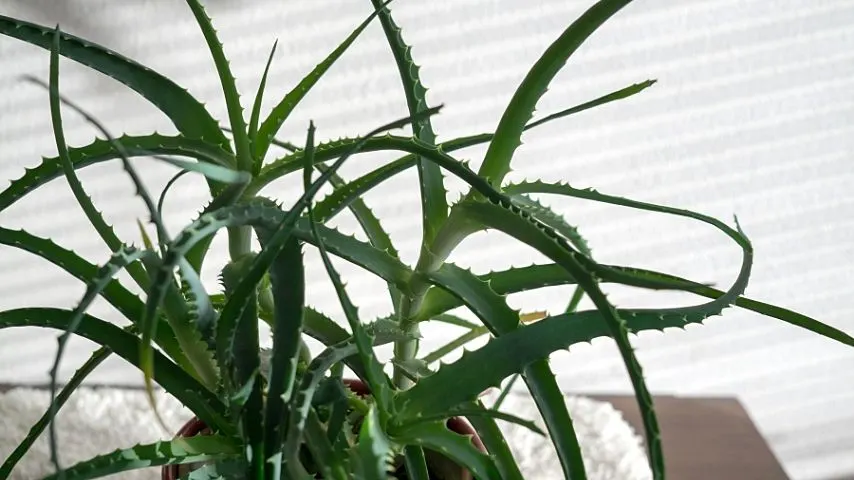
The Aloe Plant thrives in an office with windows as it needs low-maintenance to grow well
The Aloe plant in your workplace looks stunning and can also help you heal paper cuts faster. Since their leaves have wart-like tubercles dotting and white stripes, they are also called Zebra cactus.
Aloe plants do not require much maintenance and are perfect for small spaces.
The binomial nomenclature of the Aloe Plants includes:
- Scientific Name: Aloe vera
- Family: Asphodelaceae
- Temperature: 55° – 80 °F (12.77° – 26.66°C)
- Fertilizer: liquid phosphorus-heavy fertilizer once in spring. However, it doesn’t necessarily require fertilizing.
- pH: 4.5 – 5.5
- Soil: well-draining soil consisting of lava rock, perlite, or the chunks of bark, or all three
- Lighting: bright, indirect light
- Growth rate: Fast
12. Donkey Tails
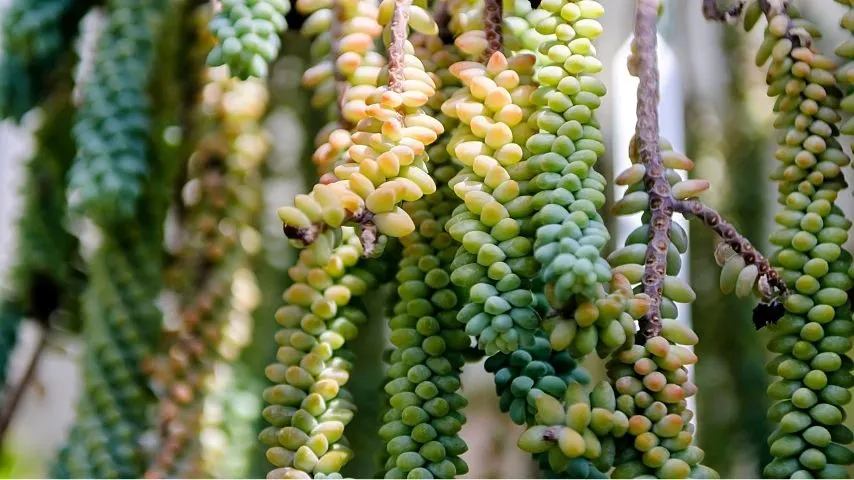
Though the Donkey Tails need to be watered every 2 weeks, you can easily propagate and grow them in an office with windows
A very cool, sculptural plant, with leaves that look braided, cascades over the edge of its container. They need to be watered every two weeks and are easily propagated.
In case breaking or falling off a tail put it back in the soil, and it will again grow roots.
The binomial nomenclature of the Donkey Tails includes:
- Scientific Name: Sedum morganianum
- Family: Crassulaceae
- Temperature: 65° – 75 °F (18.33° – 23.88 °C)
- Fertilizer: cacti fertilizer every 2-3 weeks in spring and summer. However, it doesn’t necessarily require fertilizing.
- pH: 6.0 – 8.0
- Soil: well-draining, sandy soil
- Lighting: partial sun or bright light
- Growth rate: Slow
13. Cacti
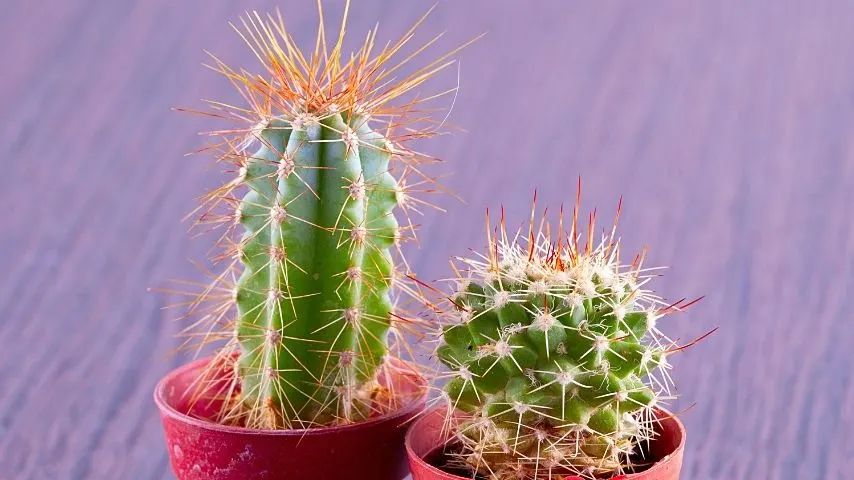
Cacti can survive in an office with windows as they can survive without water for weeks
We’ve hardly seen any office without cacti because it is easy to care for, thrive even without being watered for weeks, and survive arid conditions.
Another great property of cacti is that it feeds on dangerous EMF radiation emitting from electronic devices like mobile phones, computers, cell towers, etc., making it an excellent way to prevent cancer.
The binomial nomenclature of the Cacti includes:
- Scientific Name: Cactaceae
- Family: Cactaceae; Juss.
- Temperature: 45° – 85 °F (7.22° – 29.44 °C)
- Fertilizer: any houseplant fertilizer rich in phosphorus compared to nitrogen.
- pH: 5.0 – 6.5
- Soil: a mixture of perlite, sand, pumice, gravel
- Lighting: 4 – 6 hours of sunlight
- Growth rate: Slow
14. English Ivy
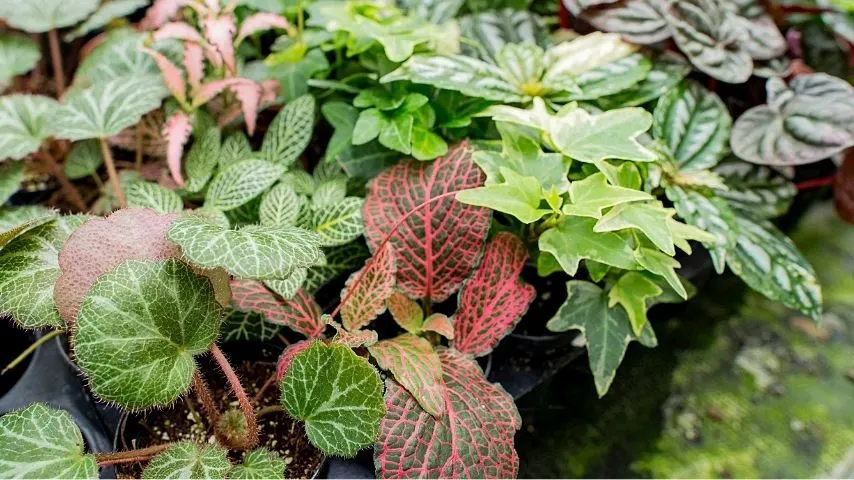
If you’re to grow the English Ivy in an office with windows, make sure to add a climbing essential
Hang or dangle these fast-growing vines from a window sill to produce a stunning display. It mainly grows and attaches to the wall, therefore, providing it with anything to climb up is essential.
The binomial nomenclature of the English Ivy includes:
- Scientific Name: Hedera helix
- Family: Araliaceae
- Temperature: 65° – 85 °F (18.33° – 29.44 °C)
- Fertilizer: fertilize using a balanced 20-20-20 fertilizer every two weeks in summer and spring
- pH: 6.5 – 7.0
- Soil: loamy, fertile, and well-draining soil with a heavy layer of mulch in dry climates
- Lighting: bright, indirect sunlight
- Growth rate: Slow
15. Spider Plant

The Spider Plant is a great plant to grow in an office with windows as they’re highly adaptable and durable
Spider plants are famous for their durability and adaptability and can also survive when neglected.
They extend quickly and prefer a hanging basket; however, you can keep yours in a small pot to have some greenery on your desk.
The binomial nomenclature of the Spider Plant includes:
- Scientific Name: Chlorophytum comosum
- Family: Asparagaceae
- Temperature: 70° – 90 °F (21.11° – 32.22 °C)
- Fertilizer: any houseplant fertilizer suits well during the growing season
- pH: 6.1 – 6.5
- Soil: loamy, well-draining, and moist soil
- Lighting: bright, indirect sunlight
- Growth rate: Fast
16. Paddle Plant
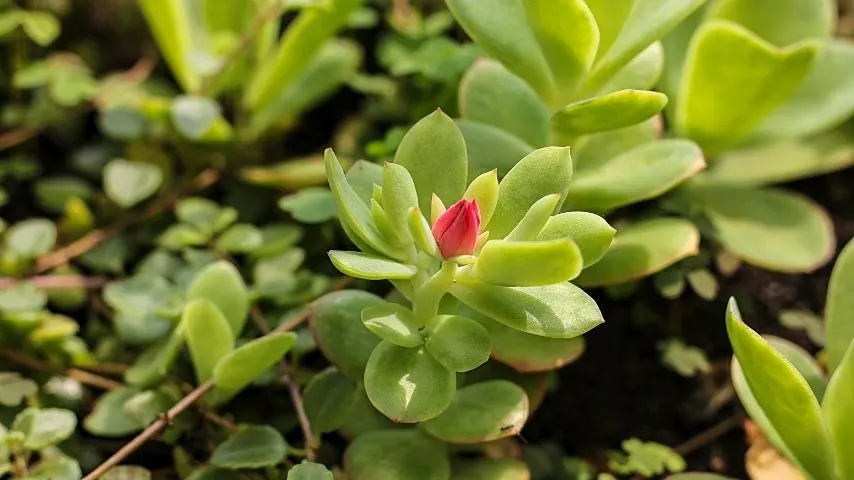
Paddle Plant is another adorable plant to grow in an office with windows
The Paddle plant consists of large, round leaves and pink tips. Since they like being in drier soil, they wouldn’t bother you by watering them from time to time.
The binomial nomenclature of the Paddle Plant includes:
- Scientific Name: Kalanchoe flapjack
- Family: Crassulaceae
- Temperature: 60° – 85 °F (15.55° – 29.44 °C)
- Fertilizer: Apply a cactus/succulent fertilizer quarterly
- pH: 6.1 – 7.8
- Soil: any cactus or succulent soil will do fine, or you can make your own by combining compost, peat moss, and coarse sand
- Lighting: bright, indirect sunlight
- Growth rate: Slow
17. Lucky Bamboo
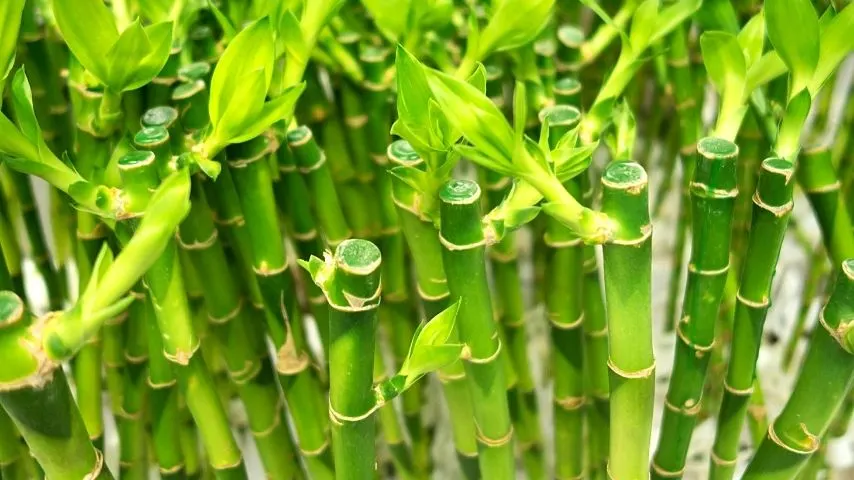
Though the Lucky Bamboo isn’t a bamboo by nature, it still is a great plant to grow in an office with windows
Another best plant for office with windows that not only looks attractive but is easy to look after is Lucky Bamboo. Despite its looks and name, Lucky Bamboo isn’t an actual bamboo plant.
The binomial nomenclature of the Lucky Bamboo includes:
- Scientific Name: Dracaena sanderiana
- Family: Asparagaceae
- Temperature: 65° – 90 °F (18.33° – 32.22 °C)
- Fertilizer: One drop of liquid fertilizer each month
- pH: 6.0 – 6.5
- Soil: a well-draining mix of perlite, charcoal, orchid bark, and organic potting soil
- Lighting: bright, indirect sunlight
- Growth rate: Fast
18. Red Philippine Evergreen
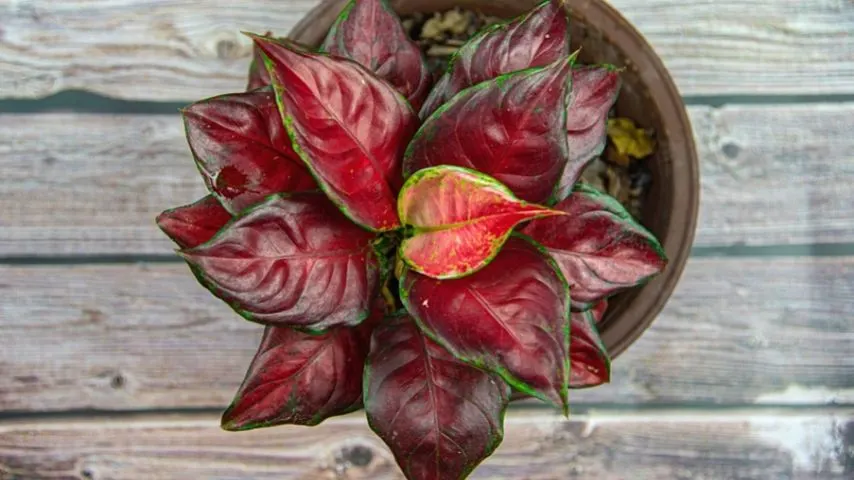
Red Philippine Evergreen is another stunning plant to grow in an office with windows
If you want to add a bit of color to your workplace, Red Aglaonema will be your right choice. It is a beautiful plant having reddish-pink leaf tips and pink stems.
Additionally, it is a low-maintenance plant that will thrive even in low light.
The binomial nomenclature of the Philippine Evergreen includes:
- Scientific Name: Aglaonema commutatum
- Family: Araceae
- Temperature: 70° – 80 °F (21.11° – 32.22 °C)
- Fertilizer: nitrogen-rich fertilizer every month during spring and summer
- pH: 5.6 – 6.5
- Soil: soil with peat moss, perlite, and orchid bark
- Lighting: bright, indirect, or low sunlight
- Growth rate: Moderate
19. King Begonia
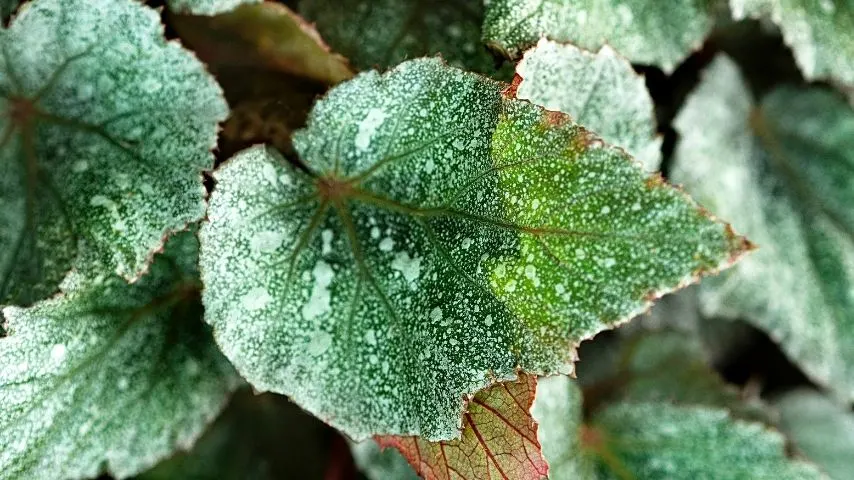
The King Begonia is another colorful plant to grow in an office with windows
Another best plant for an office with windows that will make your workplace colorful and cheery is Rex Begonia. It prefers dry soil so wait till the soil has become a little dry before watering it again.
The binomial nomenclature of the Rex Begonia includes:
- Scientific Name: Begonia rex
- Family: Begoniaceae
- Temperature: 60° – 70 °F (15.55° – 21.11 °C)
- Fertilizer: dilute, water-soluble, quarter-strength fertilizer every 2-3 weeks in the growing season.
- pH: 5.7 – 6.2
- Soil: well-draining soil with peat moss, perlite, and vermiculite
- Lighting: bright, indirect
- Growth rate: Moderate
20. Nerve Plant

Nerve Plant thrives in an office with windows if you make sure that you get its humidity requirements right
The nerve plant is a beautiful perennial with silvery-white vein color over dark green leaves. You can also find various vein colors, including pink, red, green, and white.
Since they thrive in humidity, make sure you water them as soon as the upper layer of the soil feels dry.
The binomial nomenclature of the Nerve plant includes:
- Scientific Name: Fittonia albivenis
- Family: Acanthaceae
- Temperature: 60° – 80 °F (15.55° – 32.22 °C)
- Fertilizer: diluted, liquid 5-5-5 fertilizer weakly during the growing season
- pH: 6.5
- Soil: well-draining, peat-based soil
- Lighting: medium to low filtered sunlight
- Growth rate: Fast
21. Weeping Fig
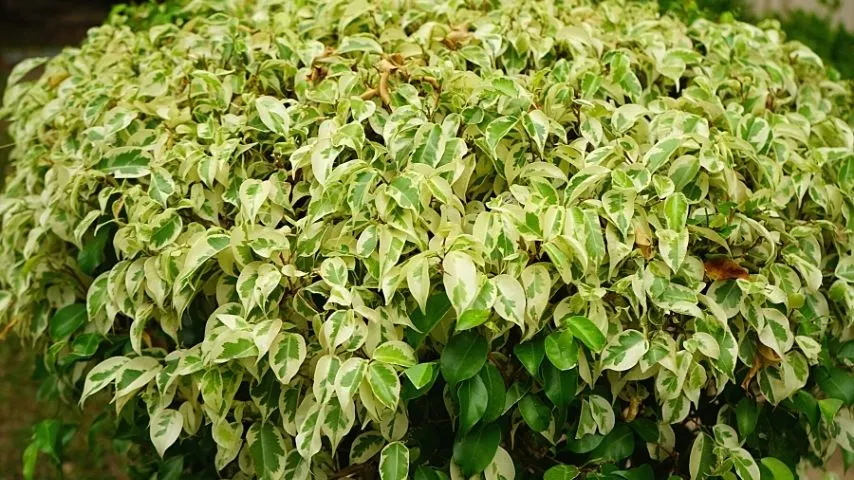
Weeping Fig is another gorgeous plant to liven up your office with windows
The weeping fig has long, pointy leaves with a slender trunk, making your workspace decorative and lively. It is a low-maintenance plant that removes harmful pollutants like toluene and formaldehyde.
The binomial nomenclature of the weeping fig includes:
- Scientific Name: Ficus benjamina
- Family: Moraceae
- Temperature: 65° – 70 °F (18.33° – 21.11 °C) at night and 75° – 85 °F (23.88° – 29.44 °C) during the day.
- Fertilizer: nitrogen-rich fertilizer throughout the growing season
- pH: 6.0 – 6.5
- Soil: well-draining soil containing perlite, vermiculite, and sand
- Lighting: six hours of filtered sunlight
- Growth rate: Fast
22. Prayer Plant
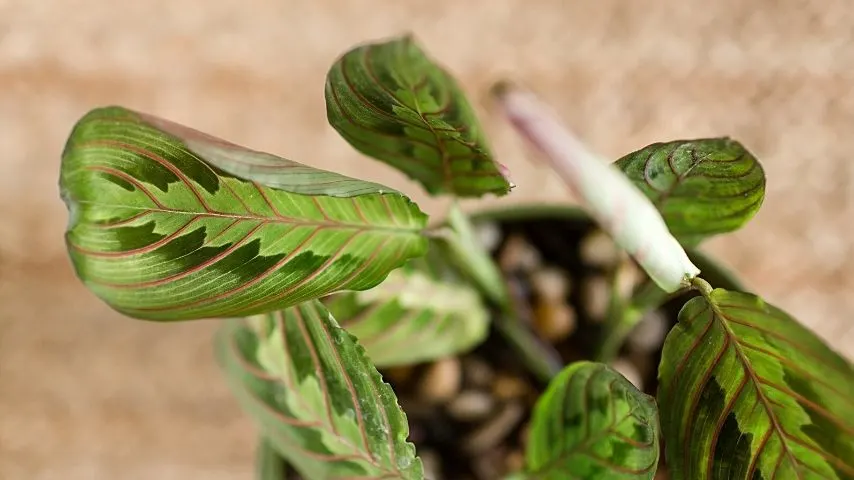
Prayer Plant is another gorgeous plant you can add to your growing plant collection for plant
The Prayer Plant consists of velvety dark green, reddish, and purple leaves folded at dusk like the plant is praying.
It is also called the Ten Commandments, as every leaf has dark green stripes. They can also produce purplish or white blooms.
The binomial nomenclature of the prayer plant includes:
- Scientific Name: Maranta leuconeura
- Family: Marantaceae; R.Br.
- Temperature: 68° – 85 °F (20° – 29.44 °C)
- Fertilizer: diluted, water-soluble fertilizer every two weeks from early spring to fall.
- pH: 5.5 – 6.0
- Soil: any well-draining soil
- Lighting: moderate indirect light
- Growth rate: Slow
23. Butterfly Palm
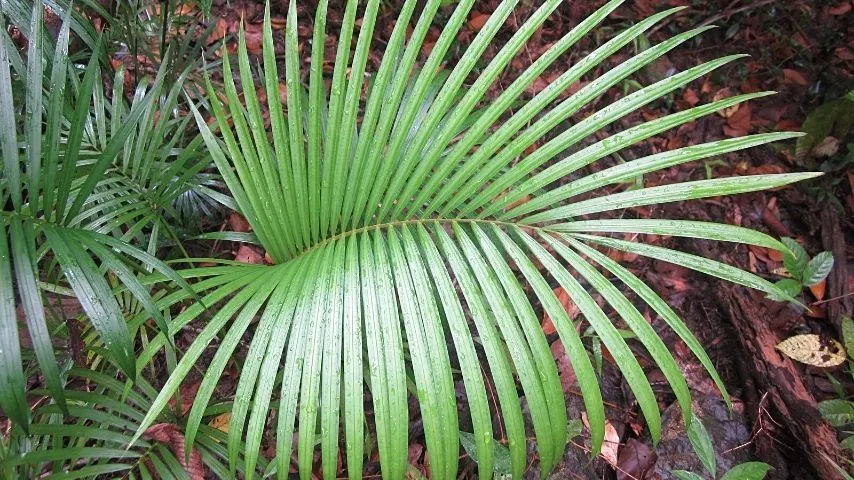
The Butterfly Palm is great for an office with windows if you have ample space in it
The butterfly palm is perfect for your office if it has ample free space. Its showy arching fronds and narrow leaves help perk up any workplace.
It can reach up to 8 ft and can purify the air excellently.
The binomial nomenclature of the butterfly palm includes:
- Scientific Name: Dypsis lutescens
- Family: Arecaceae
- Temperature: 59° – 70 °F (15° – 21.11 °C)
- Fertilizer: any balanced houseplant fertilizer every two months in the growing season
- pH: 6.0 – 6.5
- Soil: well-draining loam
- Lighting: bright, indirect light
- Growth rate: Slow to moderate
24. False Shamrock

False Shamrock is another low-maintenance plant you can grow in an office with windows
This plant’s beautiful burgundy-colored, triangular-shaped leaves can make your office more attractive. It is a low-maintenance plant and won’t bother you during times of immense work.
The binomial nomenclature of the False shamrock includes:
- Scientific Name: Oxalis triangularis
- Family: Oxalidaceae
- Temperature: 60° – 70 °F (15.55° – 21.11 °C)
- Fertilizer: any balanced liquid houseplant fertilizer every two weeks in the growing season
- pH: 6.6 – 6.8
- Soil: well-draining loamy, sandy soil
- Lighting: Medium to low filtered sunlight
25. Zebra Cactus
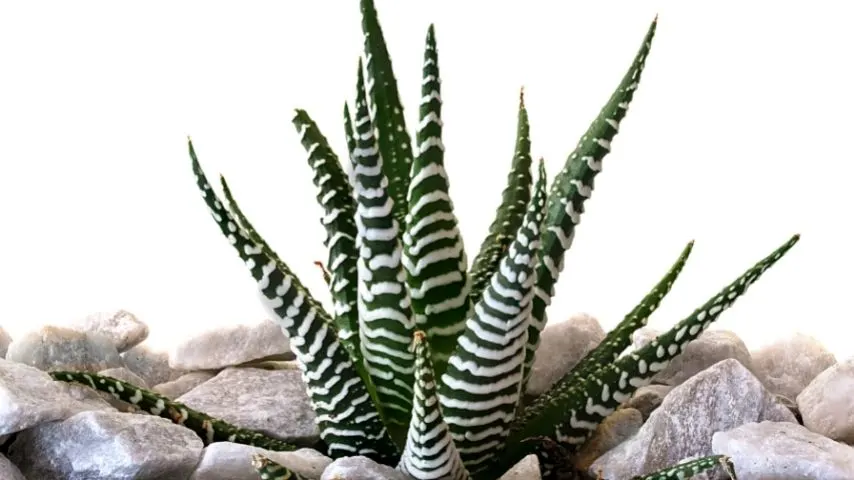
The Zebra Cactus is one of the cactus varieties you can grow in an office with windows
Another plant that looks attractive and thrives in an office with windows is Zebra Cactus. It’s a small plant with dark green fleshy leaves having wart-like tubercles dotting and white stripes.
It requires almost no maintenance and is suitable for small spaces.
The binomial nomenclature of the Zebra Cactus includes:
- Scientific Name: Haworthiopsis attenuata
- Family: Asphodelaceae
- Temperature: 65° – 80 °F (18.33° – 26.66 °C)
- Fertilizer: any cactus fertilizer (diluted) in summer and spring
- pH: 6.6 – 7.5
- Soil: well-draining, sandy soil
- Lighting: bright, indirect sunlight
- Growth rate: Slow
26. Ponytail Palm Tree
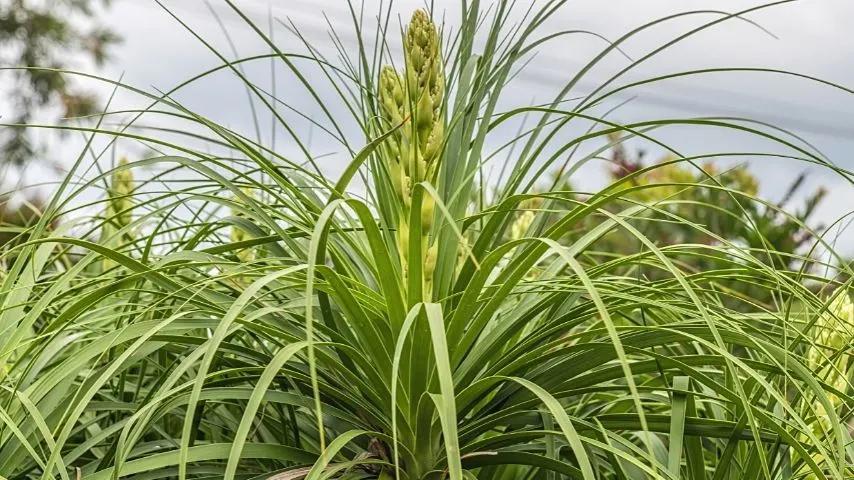
Even if the Ponytail Palm Tree’s left without water for a few days in an office with windows, it will still thrive due to its rhizomes
It is a bonsai tree-like plant that is perfect for forgetful caregivers. Its trunk’s base consists of a bulb that serves as a reservoir and can survive for a month without water.
The binomial nomenclature of the Ponytail Palm Tree includes:
- Scientific Name: Beaucarnea recurvata
- Family: Asparagaceae
- Temperature: 60° – 80 °F (15.55° – 26.66 °C)
- Fertilizer: any cactus fertilizer (liquid) once or twice in the growing season
- pH: 6.5 – 7.5
- Soil: well-draining, sandy soil
- Lighting: bright to low sunlight
- Growth rate: Slow
27. Swiss Cheese Plant
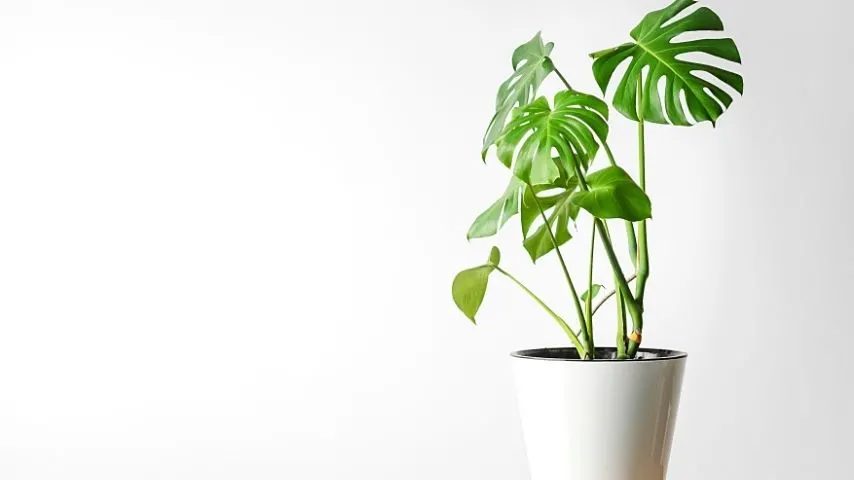
If you’re looking for a low-maintenance and stunning plant to grow in an office with windows, the Swiss Cheese Plant is your best choice
Swiss Cheese Plant is a great choice for an office with windows as it looks beautiful, requires little maintenance, and can survive for weeks without water.
The binomial nomenclature of the Swiss Cheese Plant includes:
- Scientific Name: Monstera deliciosa
- Family: Araceae
- Temperature: 60° – 85 °F (15.55° – 29.44 °C)
- Fertilizer: fertilize monthly during spring and summer with a balanced houseplant fertilizer
- pH: 5.5 – 7.0
- Soil: peat-based soil or a mixture of perlite, charcoal, and orchid bark
- Lighting: bright, indirect sunlight
- Growth rate: Fast
28. Umbrella Tree
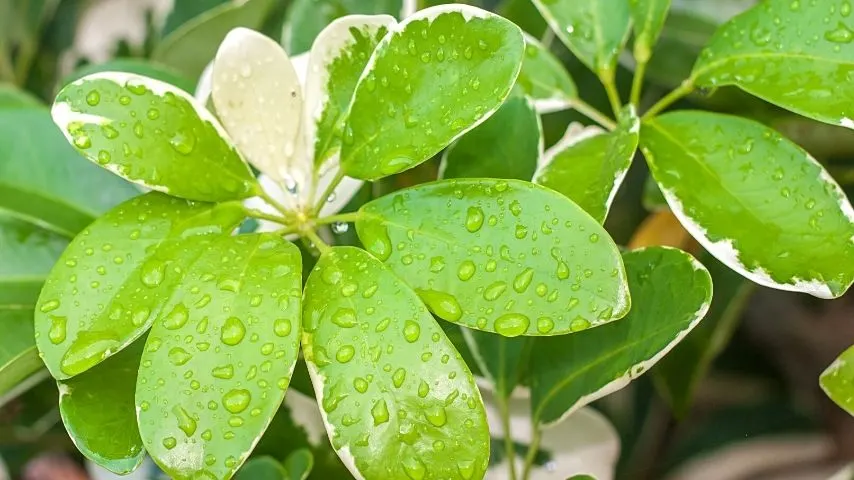
Though the Umbrella Tree can thrive in an office with windows, make sure never to neglect it as it will grow slower if you do
The Umbrella tree is a beautiful-looking shrub that can reach up to 15 feet. However, it requires a little care and will grow slower if neglected.
Also, this plant can be a little toxic.
The binomial nomenclature of the Umbrella Tree includes:
- Scientific Name: Schefflera
- Family: Araliaceae
- Temperature: 65° – 90 °F (18.33° – 32.22 °C)
- Fertilizer: balanced liquid fertilizer (20-20-20) should be applied every 2-3 weeks in the growing season while watering
- pH: 6.0 – 6.5
- Soil: well-draining, rich, loose soil
- Lighting: medium, indirect sunlight
- Growth rate: Fast
29. Lady Palm

The Lady Palm is one of the best plants to grow in an office with windows if you’re a newbie plant grower
Having a vibrant, full palm in your office is always a cheery addition, and this plant is an excellent choice for beginners.
Unlike other palms, the Lady palm requires almost no care and can thrive even in low lighting.
The binomial nomenclature of the Lady Palm includes:
- Scientific Name: Rhapis excelsa
- Family: Arecaceae
- Temperature: 60° – 80 °F (15.55° – 26.66 °C)
- Fertilizer: Liquid houseplant fertilizer diluted to half-strength once in summer
- pH: 5.5 – 7.0
- Soil: well-draining, loamy soil
- Lighting: bright to medium, indirect sunlight
- Growth rate: Slow
30. Bromeliads
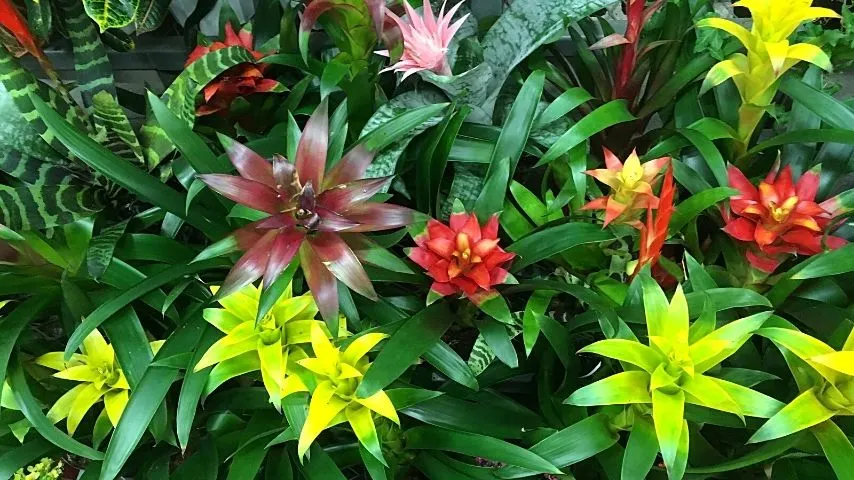
Bromeliads are colorful plants that you can grow in your offices with windows
Bromeliads are a beautiful addition to a workplace and can live for years. They produce side shoots or pups that later replace the actual plant.
Although they are low-maintenance plants, cold drafts can be harmful, so keep them away from it.
The binomial nomenclature of the Bromeliads includes:
- Scientific Name: Bromeliaceae
- Family: Bromeliaceae; Juss.
- Temperature: 60° – 85 °F (15.55° – 29.44 °C)
- pH: 4.0 – 7.0
- Soil: well-draining, peat-based soil
- Lighting: More than 5 hours of bright, indirect sunlight
- Growth rate: Slow
Conclusion About
Offices need to look attractive, fresh, and cheery to increase productivity.
The above-mentioned is a list of the 30 best plants for offices with windows that will perk up your workplace and provide you with clean, healthy air.

Daniel has been a plant enthusiast for over 20 years. He owns hundreds of houseplants and prepares for the chili growing seasons yearly with great anticipation. His favorite plants are plant species in the Araceae family, such as Monstera, Philodendron, and Anthurium. He also loves gardening and is growing hot peppers, tomatoes, and many more vegetables.


